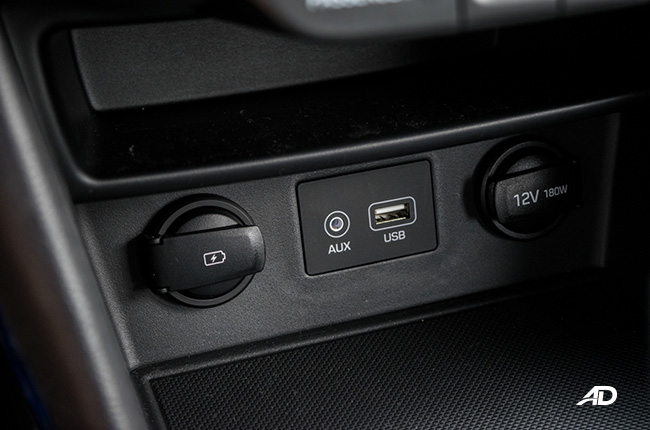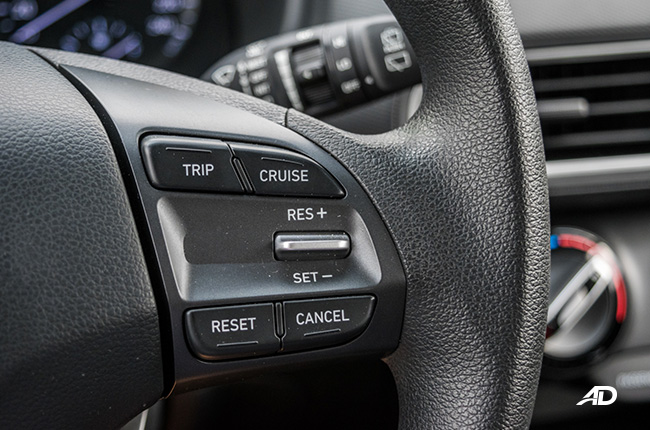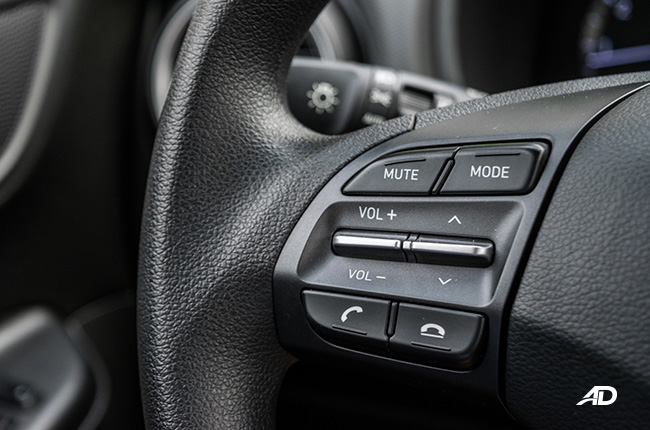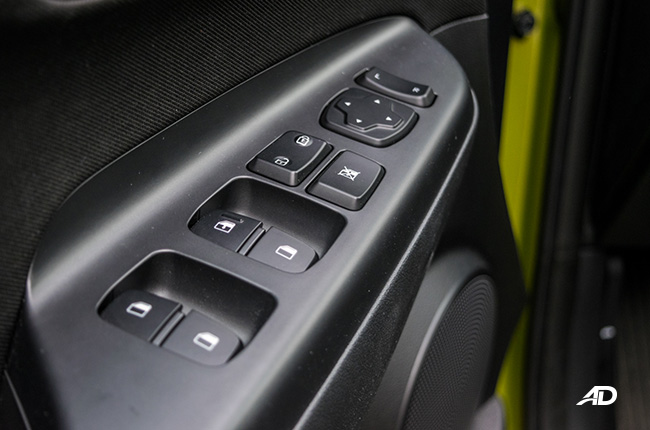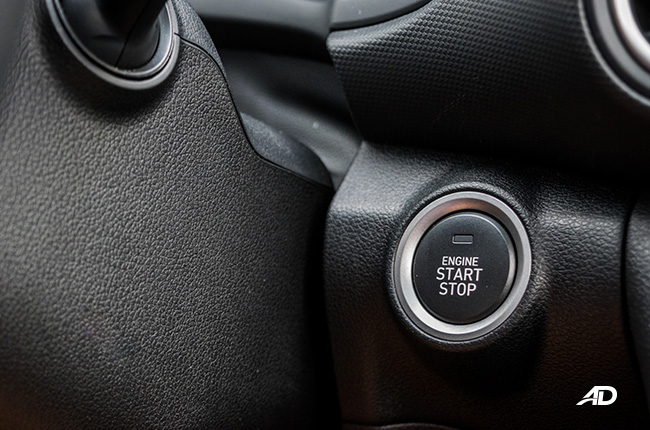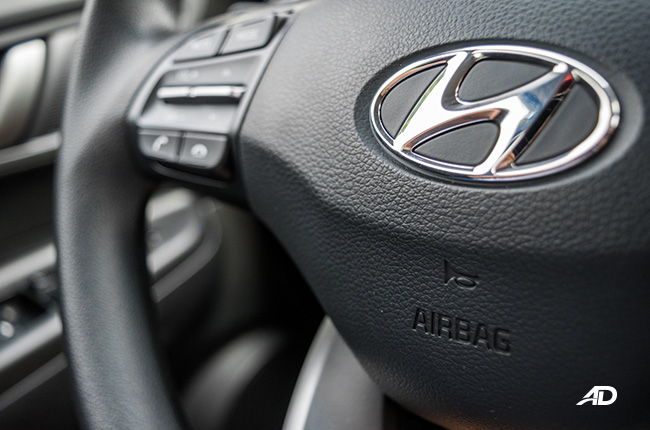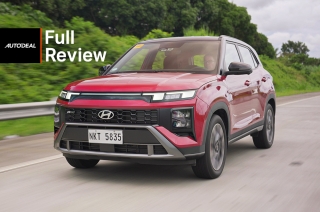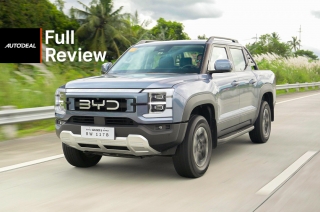
The Hyundai Kona is undeniably popular, getting so much social media engagements and reactions ever since it debuted at the 2018 Manila International Auto Show. Even at mall displays, it gathers a number of people around mainly because of its compelling looks that’s a bit different from what Filipinos have been seeing on the road.
While the Kona is head-turning and has proven its great driving dynamics in my general review, the technology it offers is questionable. Here’s a closer look into the Kona’s technology features, along with its safety equipment that comes with its price P1,118,000 price tag.
Stripped-down tech offering
No, this doesn’t mean that the Kona is stripped down to just bare essentials. It still has convenient tech features for the driver – things that actually matter, I must say.
It has speed-sending door locks to begin with, which kick in when you reach around 30 km/h. The side mirrors are also power adjustable, although folding them would be manual. The driver’s window is auto-down, as well, but pulling it up would require you to keep your finger on the lever, which isn’t a hard thing to do, really. Let me just remind you that there was a time when you have to manually roll windows up or down – something to confuse kids these days, but I digress.
The Kona has an active keyless entry where you just have to press a button on the door handles to unlock all the doors, provided that the key fob is with you. In combination with that, it also has a push-start ignition button and cruise control.
Probably the biggest downside of the Kona is its non-touchscreen, monochrome infotainment system. While most cars these days, including small entry-level nameplates, invest on bigger and better head units, Hyundai Philippines decided to go basic with its entertainment system. Admittedly, though, the monochrome display somehow blends well in the minimalist cabin, and smartphone connectivity isn’t too much of a problem; it has Bluetooth and iPod connectivity. Handsfree calls are clear and can be controlled via the buttons on the steering wheel. Fast-charging USB ports are limited to front passengers, though.
As a former musician, I must say that the speakers of the Kona produce a decent sound for normal listening pleasure – decent, but won’t probably suit the taste of music connoisseurs. It lacks clarity on highs and lows, even when the EQ is toggled. But for pop music where lyrics mostly matter, it gets a thumbs up from me.
Generous on safety
Aside from its driving dynamics, the Kona somehow stands out with its safety features. It has the standard ABS with EBD, while both the driver and front passenger get seatbelt reminders; my wife is very particular with this since she’s always with me when I’m driving.
In addition, the Kona has six airbags: two in the front, two on both sides, and two curtains. You might not actually feel the effect of these things but when push comes to shove, they could actually save your life. It also has ISOFIX child seat anchors and tire pressure monitors, along with an immobilizer for security.
The Kona also has a feature that’s often overlooked – the switching off of the daytime running lights. When you use your turn signals in Hyundai’s crossover, the daytime running light near it switches off. For the uninitiated, this process complies with the international safety standards for vehicles.
Latest Review
-
2026 BYD eMAX 7 Review / Review
Can the BYD eMAX 7 prove that electric MPVs work in the Philippines? With 201 hp and 530 km of range, it just might.
4.3 / 5 -
2026 Hyundai Creta N-Line Review / Review
The Creta N-Line isn’t just a Creta with sporty looks; it’s got the performance and bite to back up its style.
4.3 / 5 -
2026 BYD Shark 6 DMO Review / Review
Can a hybrid pickup truck break the mold of what pickup trucks can be? The Shark 6 DMO has something to say about that.
4.6 / 5
Popular Articles
-
Electric Vehicles in the Philippines for under P1 million
Jerome Tresvalles · Aug 19, 2025
-
Top 3 Cars For Every Lifestyle—What Cars Are Right For You? | Behind a Desk
Caco Tirona · Apr 24, 2024
-
5 Tips to Maximize Fuel Efficiency
Jerome Tresvalles · Sep 09, 2024
-
Five driving habits that are draining your fuel tank
Jerome Tresvalles · Jun 24, 2025
-
Can engine braking harm your engine?
Jerome Tresvalles · Sep 11, 2025
-
Do electric cars even need maintenance?
Jerome Tresvalles · Oct 23, 2024
-
Best vehicles for an active outdoor lifestyle
Shaynah Miranda · Jul 25, 2024
-
How to drive different types of vehicle transmissions
May 23, 2024
-
5 easy ways to keep your car interior clean
Allysa Mae Zulueta · Nov 15, 2021
-
How to survive Metro Manila traffic
Earl Lee · Aug 16, 2022


